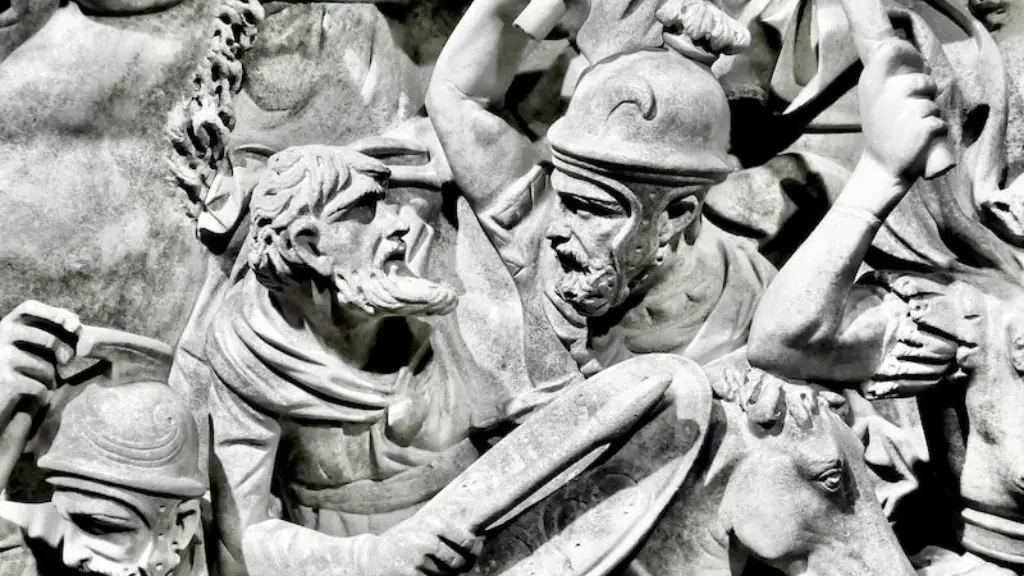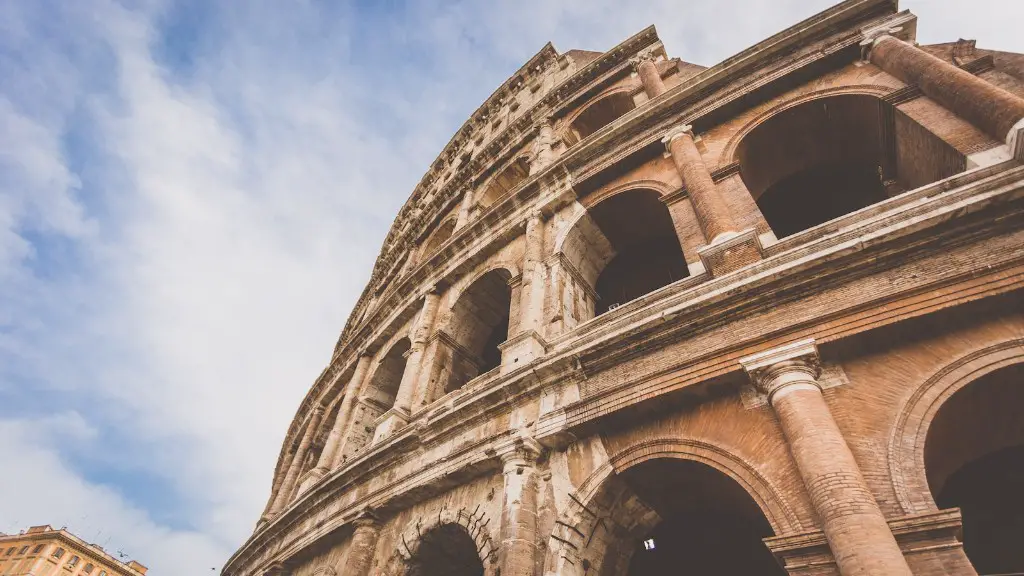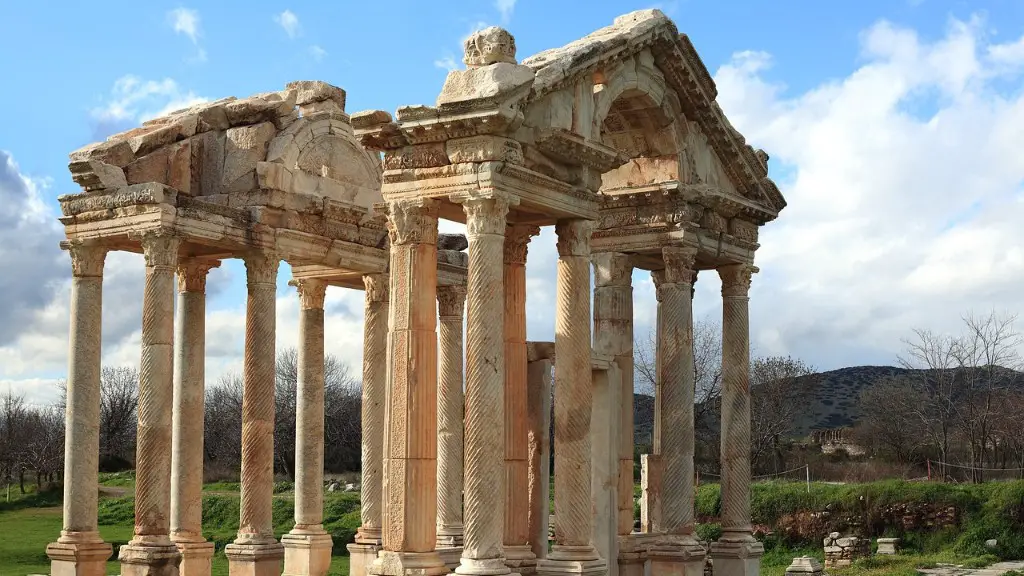Introduction
Slaves in Ancient Rome were an integral part of the social, political, and economic structure of Rome. It is estimated that by 400 BC, slaves accounted for half of the population of Rome, making them a significant labour source in the Roman Republic. Slaves were usually acquired through warfare, conquest, or purchased from foreign lands, and their lives were heavily controlled and regulated. Although the legal status of a slave in Rome was that of property, slaves were compensated for their labour and were able to own property and possessions of their own. This article will provide an overview of the many roles slaves had in Ancient Rome and discuss the experiences of slaves in society.
What Roles did Slaves Serve in Ancient Rome?
Slaves made many significant contributions to Ancient Rome, particularly in the areas of domestic service, construction, business and finance, farming, and military service. Slaves performed a range of domestic duties, including cooking, cleaning, and supervising the household. They provided personal care and services to their owners such as washing, doctoring, and even reading and writing correspondence. Slaves also worked in public businesses, such as in the food markets of Rome, in wine shops and taverns, in shops, and on the docks. Additionally, slaves worked in the construction of bridges, aqueducts, roads, temples, and even houses. In farming, slaves helped with plowing, weeding, and harvesting, as well as other types of agricultural labour. Finally, slaves also served in the Roman army, primarily in the form of transportation, engineers and medical personnel, though some may have fought in battle.
Life of a Slave in Ancient Rome
The life of a slave in Ancient Rome was difficult and oppressive. Slaves did not have many rights, and their freedom was heavily restricted. They were not allowed to own property, marry without their owners’ consent, or become citizens. They could be subject to corporal punishment, and could be sold, given away, or killed at their owners’ discretion. Slaves in Rome lived in miserable conditions, often in small quarters with little food or other amenities. In spite of these hardships, some slaves rose to positions of power and authority in their owners’ households.
Condition of Slaves in Ancient Rome
The condition of slaves in Ancient Rome varied greatly, depending on the type of slavery, the owner, and the region. Some slaves were treated as family members and were granted some forms of autonomy, while others were treated harshly and had little to no rights. Generally, slaves were not allowed to leave the home of their owner or to marry without permission. Slaves in the public economy were owned by the state, and worked in factories, mines, and the military.
Starments from an Expert
“In Ancient Rome, the enslavement of people was an accepted and necessary part of society. Without the hard labour of slaves, Rome and its Empire could not have been built and maintained. Slavery was a socially accepted institution and was heavily governed by law. Slaves made essential contributions to the running of the Roman Empire, and although their life was hard, some slaves were able to rise to positions of responsibility and power.”
Analysis and Insights
The role of slaves in Ancient Rome was significant, yet deeply rooted in oppression and injustice. Slaves performed a variety of roles and tasks, both in private and public life. They faced tremendous hardships and suffered greatly under the Roman law. Despite this, some slaves were able to rise to positions of power and influence in their owners’ households and bring about some degree of autonomy and freedom.
Slaves in Religion and Legal System
In Rome, slaves were involved in religion and the legal system in various ways. Slaves were frequently used as intermediaries in religious rituals and were the primary people responsible for religious ceremonies in the home. Slaves were also used as witnesses in legal cases, as well as informants and accusers in public crimes.
Slave Rebellions
Despite the low status of slaves in Rome, some slaves did revolt. The most famous of these revolts was the rebellion led by Spartacus, a former gladiator who led an army of slaves against Rome in 73 BC. Although it was ultimately unsuccessful, the rebellion showed that slaves were capable of fighting for freedom and in a sense, it was a small victory for slaves.
Slave Emancipation
By the 5th century AD, the practice of slavery in Rome had been largely abolished. This was due to a multitude of factors, including the weakening of the Roman economy, religious and philosophical movements against slavery, and the conversion of Rome to Christianity. While the emancipation of slaves was an important achievement, it should be noted that it was a gradual process and only a small part of the population was affected.
Slaves in Public Life
Slaves were also involved in public life in a variety of ways. They served in hospitals, as entertainers, in gladiatorial games and chariot races, and as household servants in noble houses. Slaves also took part in bureaucratic and administrative tasks, such as managing of finances and administration of schools, hospitals, and factories.
Conclusion
The role of slaves in Ancient Rome was diverse and substantial. They performed a range of tasks, from domestic duties to public works, and provided a vital source of labour for the Roman economy. Despite the oppressive nature of slavery, some slaves were able to rise to positions of power and influence and even fought for their freedom during slave rebellions. Ultimately, the emancipation of slaves was an important achievement in Roman history.


